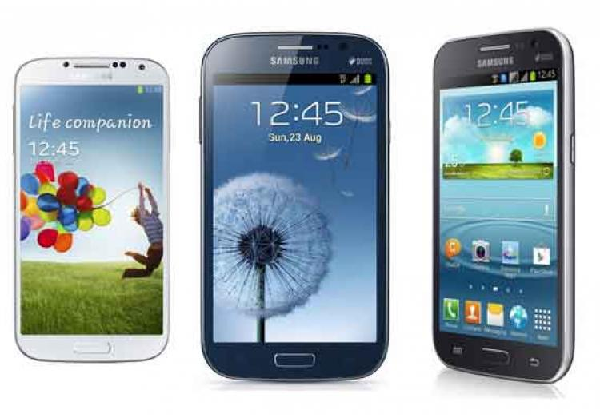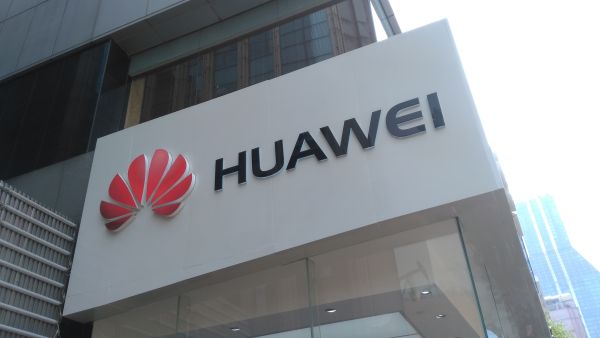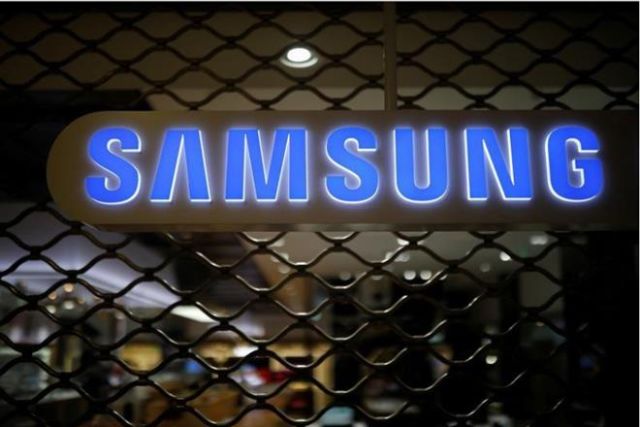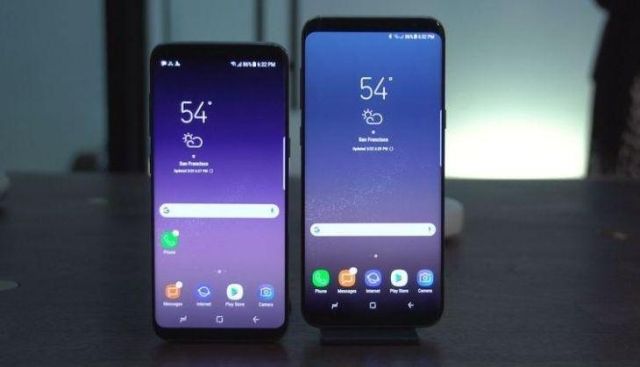
by Editor | May 25, 2021 | Branding, Business, Economy, Markets, Medium Enterprise, News, SMEs
 New Delhi : Samsung dominated the premium smartphone segment in India in the first half of 2018 with almost half the market share, a new report from CyberMedia Research (CMR) said on Friday.
New Delhi : Samsung dominated the premium smartphone segment in India in the first half of 2018 with almost half the market share, a new report from CyberMedia Research (CMR) said on Friday.
According to CMR India’s “Mobile Handset Review” report, Samsung (48 per cent) was followed by Chinese smartphone player OnePlus, which grabbed the second spot with 25 per cent share, and Apple with 22 per cent share.
“The premium smartphone segment, though small, is driven by aspirational, tech-savvy millennials and in the coming years, will continue to grow significantly. Samsung’s flagship S9 helped it garner a lion’s share of the premium smartphone segment,” Prabhu Ram, Head-Industry Intelligence Group, CMR, said in a statement.
One in two premium smartphones shipped in the first half of 2018 was a Samsung device.
“The success of OnePlus 6 can be traced to the intelligent brand strategy of packing the best specs at competitive price points, contributing to the emergence of a new ‘budget premium’ smartphone segment under sub-Rs 30,000,” added Ram.
During the first half of 2018, OnePlus introduced its “OnePlus Experience Stores” and is planning to embrace offline in a big way, to complement its strong online presence.
The iPhone-maker suffered a decline in demand for its iPhones due to pricing challenges on account of post-duty increase.
“Apple is reworking its India strategy for the all-important second half of 2018, with new retail partnerships, first-party stores and service overhauling with India-focused apps and services, including refreshed Apple Maps,” said Narinder Kumar, Lead Analyst-Industry Intelligence Group, CMR.
—IANS

by Editor | May 25, 2021 | Branding, Business, Marketing Basics, Markets, Sales, SMEs
 New Delhi : Chinese tech conglomerate Huawei surpassed Apple to become the second largest smartphone brand worldwide in the second quarter of 2018 as South Korean giant Samsung continued to be the global leader, two reports said on Wednesday.
New Delhi : Chinese tech conglomerate Huawei surpassed Apple to become the second largest smartphone brand worldwide in the second quarter of 2018 as South Korean giant Samsung continued to be the global leader, two reports said on Wednesday.
Samsung had 20 per cent share, followed by Huawei at 15 per cent market share and Apple with 11 per cent as global smartphone shipments declined 2 per cent to 360 million units annually in Q2, said Hong Kong-based Counterpoint Research’s “Market Monitor” service.
“Huawei had a good second quarter in 2018 as it shipped more smartphones than Apple to capture the second spot in the global smartphone rankings, after 7 years of Apple-Samsung dominance,” said Tarun Pathak, Associate Director at Counterpoint Research.
Huawei with its sub-brand, Honor, is offering a broad and refreshed portfolio at affordable prices which is driving growth in the overseas market.
“Honor, which is already strong in the e-commerce segment, is now adopting a multi-channel strategy through branded stores in the southeast Asia market. We expect store counts to increase in the future,” Pathak noted.
According to Singapore-based market research firm Canalys, Huawei shipped 54 million handsets, up 41 per cent year-on-year.
“Despite its failure to strike a US carrier partnership earlier this year, the company has turned around quickly, moving away from its drive for profitability and focusing instead on finding volume growth at the low end,” said Mo Jia, Canalys Analyst.
“Honor, which has long been a major brand in China but relatively small overseas, has taken a pivotal role in this strategy,” he added.
Samsung shipped 73 million units while Apple shipped 41 million iPhones..
“Even as Samsung smartphone shipment volumes declined globally, the brand posted a record second quarter in India, regaining its top position in Indian smartphone market,” according to Counterpoint.
Samsung will launch its Galaxy Note 9 flagship soon to counter the string of premium segment launches by its competitors and to gain some momentum before the launch of new iPhone in September.
Top 10 players now capture 79 per cent of the market, thereby leaving over 600 brands to compete for the remaining 21 per cent of the market.
“Major Chinese brands like OPPO, Vivo, Huawei are now focusing on increasing their average selling prices (ASPs) by bringing in features like artificial intelligence, bezel-less displays, dual cameras and innovative industrial designs in the affordable premium segment,” explained Counterpoint Research Analyst Shobhit Srivastava.
Xiaomi was on the fourth spot, capturing 9 per cent market share with shipments of 33 million smartphones globally.
OPPO and Vivo were the fifth and sixth largest brands during the quarter, capturing 8 per cent and 7 per cent market share, respectively.
—IANS

by Editor | May 25, 2021 | Business, SMEs
 Seoul : Samsung Electronics posted 14.9 trillion won ($13.3 billion) in operating profit for the second quarter that ended on June 30 as revenue fell 4 per cent to 58.5 trillion won ($52.2 billion) from a year earlier, the company announced on Tuesday.
Seoul : Samsung Electronics posted 14.9 trillion won ($13.3 billion) in operating profit for the second quarter that ended on June 30 as revenue fell 4 per cent to 58.5 trillion won ($52.2 billion) from a year earlier, the company announced on Tuesday.
The consolidated net profit was 11.04 trillion won ($9.85 billion).
“Second quarter revenue fell due to softer sales of smartphones and display panels, despite robust demand for memory chips,” said the South Korea-based giant.
The chip business continued to deliver strong earnings, driven by demand for DRAM chips used in data centres and NAND flash memory for high-capacity storage, amid a softening of NAND prices.
In the display business, the company saw weak demand for flexible OLED panels in the second quarter while the shipment and price for LCD panels also fell.
Amid the stagnant high-end smartphone market, Samsung reported a drop in earnings, both year-on-year and quarter-on-quarter, over slow sales of the Galaxy S9 and S9+ premium smartphones.
The network business, however, achieved solid growth led by investments in LTE networks by key global customers.
The mobile market condition will likely remain challenging in the second half amid pricing competition and new product launches, said Samsung.
“The company will respond through the early introduction of the Galaxy Note and competitive mid- and low-end models with new features,” it added.
In mobile, demand for high-density storage for new smartphones and high-end models is likely to remain robust.
“In mobile, in addition to new flagship smartphone launches, memory content is projected to increase in mid-range models as they begin to support high-specification mobile games, on-device AI and dual camera features,” said Samsung.
Demand for smartphones and tablets is forecast to increase in the second half as the market enters a period of strong seasonality, but competition is seen intensifying as new smartphone models are released.
Following a successful restructuring of its product line-up, Samsung led expansion of the premium TV market, winning more than 50 per cent market share in the ultra-large screen segment of 75-inches and above.
Looking to the second half, the TV market is projected to grow YoY, especially in developed economies, said the company.
“Looking ahead, Samsung expects sustained strength in the memory market and growing demand for flexible OLED panels to drive earnings higher in the second half,” the company added.
—IANS

by Editor | May 25, 2021 | Business, Markets, Sales, SMEs
 New Delhi : Samsung India has sold over 20 lakh units of its recently-launched Galaxy J8 and J6 mid-segment smartphones in India, attracting nearly 50,000 consumers a day, the company said on Monday.
New Delhi : Samsung India has sold over 20 lakh units of its recently-launched Galaxy J8 and J6 mid-segment smartphones in India, attracting nearly 50,000 consumers a day, the company said on Monday.
Galaxy J6 was launched on May 22 while Galaxy J8 was introduced on July 1.
“We are happy with the huge success of Galaxy J8 and J6 smartphones. Our philosophy of keeping our ears to the ground and incorporating consumer feedback into our products has paid off,” said Asim Warsi, Senior Vice President, Samsung India.
The “Chat-over-Video” feature in Infinity models received an overwhelming response with more than 50 per cent consumers using it on a regular basis.
“Galaxy J8 and J6 have set the standard for an unparalleled viewing experience with our signature super AMOLED Infinity Display,” Warsi added.
Galaxy J8 is available at Rs 18,990 and Galaxy J6 (64GB and 32GB variants) are available at Rs 15, 990 and Rs 13,990, respectively.
Both Galaxy J8 and J6 sport Samsung’s signature “Infinity Design” philosophy, giving users nearly 15 per cent more display area without increasing the overall size of the device.
The Super AMOLED display deliver an 18.5:9 aspect ratio, providing more browsing space.
Galaxy J8 also sports advanced dual rear camera with flagship “Live Focus” feature, where users can bring sharp focus to the foreground while blurring out the background.
“Galaxy J, known for unique ‘Make for India’ innovations, has a stellar legacy, accounting for one in three smartphones sold in the country. We are confident that the new devices will help us further increase our market share in the country,” Warsi noted.
Samsung shipped 9.9 million smartphones in India in the second quarter of 2018, registering almost 50 per cent annual growth rate — its best since the fourth quarter of 2015, Singapore-based market research firm Canalys said last week.
Samsung “J2 Pro” was the top model in the second quarter, with 2.3 million units shipped in India.
—IANS

by Editor | May 25, 2021 | Branding, Business, Markets, Technology
 San Francisco : Gaining ground, Apple improved its position in the US smartphone market during the second quarter of 2018, eating into Android’s share and equalising its standing with rival Samsung, a report said on Wednesday.
San Francisco : Gaining ground, Apple improved its position in the US smartphone market during the second quarter of 2018, eating into Android’s share and equalising its standing with rival Samsung, a report said on Wednesday.
The iPhone-maker’s iOS platform accounted for 36 per cent of US activations as compared to 63 per cent for Android, said Consumer Intelligence Research Partners (CIRP).
When it comes to brand loyalty, Apple ended the quarter with a 36 per cent share of activations. Samsung too had 36 per cent of the market.
The US smartphone market further consolidated in the quarter ending June, with iOS improving its take from the previous year.
“Apple iOS improved its share of activations relative to last quarter and to one year ago,” Apple Insider reported, quoting Josh Lowitz, Partner and Co-Founder of CIRP.
“This reverses the trend from a year ago, when Apple’s share fell relative to the March 2017 quarter. As we’ve seen before, consumers have become increasingly loyal to an operating system,” Lowitz added.
CIRP expects things to even out with the Cupertino-headquartered giant taking one-third of the market and tech titan Google taking two-thirds.
According to Lowitz, a further consolidation of smartphone sales is in the offing with Apple and Samsung leading the way.
According to the report, Apple had its best holiday quarter ever in February though iPhone sales were down 1.2 per cent (year over year) with 77.3 million units.
Smaller smartphone players such as LG and Motorola have lost ground over the past year, a trend which is expected to continue in the months ahead.
The findings were based on a survey of 500 people who activated new or used phones during April to June 2018, according to MacRumors.
—IANS

 New Delhi : Samsung dominated the premium smartphone segment in India in the first half of 2018 with almost half the market share, a new report from CyberMedia Research (CMR) said on Friday.
New Delhi : Samsung dominated the premium smartphone segment in India in the first half of 2018 with almost half the market share, a new report from CyberMedia Research (CMR) said on Friday.



